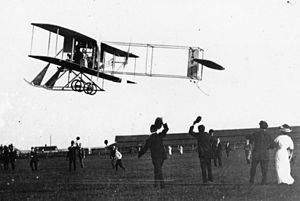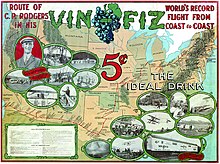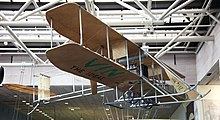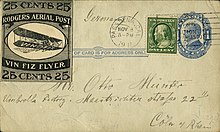
The Wright brothers, Orville Wright and Wilbur Wright, were American aviation pioneers generally credited with inventing, building, and flying the world's first successful airplane. They made the first controlled, sustained flight of an engine-powered, heavier-than-air aircraft with the Wright Flyer on December 17, 1903, four miles (6 km) south of Kitty Hawk, North Carolina, at what is now known as Kill Devil Hills. In 1904 the Wright brothers developed the Wright Flyer II, which made longer-duration flights including the first circle, followed in 1905 by the first truly practical fixed-wing aircraft, the Wright Flyer III.

The Inverted Jenny is a 24 cent United States postage stamp first issued on May 10, 1918, in which the image of the Curtiss JN-4 airplane in the center of the design is printed upside-down; it is one of the most famous errors in American philately. Only one pane of 100 of the invert stamps was ever found, making this error one of the most prized in philately.

Postal history is the study of postal systems and how they operate and, or, the study of the use of postage stamps and covers and associated postal artifacts illustrating historical episodes in the development of postal systems. The term is attributed to Robson Lowe, a professional philatelist, stamp dealer and stamp auctioneer, who made the first organised study of the subject in the 1930s and described philatelists as "students of science", but postal historians as "students of humanity". More precisely, philatelists describe postal history as the study of rates, routes, markings, and means.

An airmail stamp is a postage stamp intended to pay either an airmail fee that is charged in addition to the surface rate, or the full airmail rate, for an item of mail to be transported by air.

In philately, the term cover pertains to the outside of an envelope or package with an address, typically with postage stamps that have been cancelled and is a term generally used among stamp and postal history collectors. The term does not include the contents of the letter or package, although they may add interest to the item if still present. Cover collecting plays an important role in postal history as many covers bear stamps, postmarks and other markings along with names and addresses all of which help to place a cover at a given time and place in history.
This is a list of aviation-related events from 1911:

John Augustus Rodgers Jr. was an officer in the United States Navy and a pioneering aviator.

Peter M. Bowers was an aeronautical engineer, airplane designer, and a journalist and historian specializing in the field of aviation.
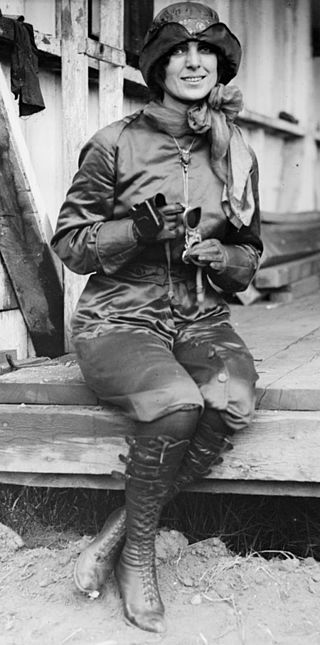
Harriet Quimby was an American pioneering aviator, journalist, and film screenwriter. In 1911, she became the first woman in the United States to receive a pilot's license and in 1912 the first woman to fly across the English Channel. Although Quimby died at the age of 37 in a flying accident, she strongly influenced the role of women in aviation.
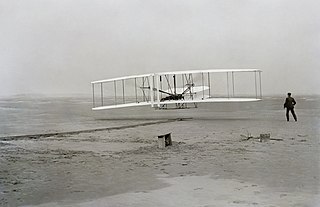
The Wright Flyer made the first sustained flight by a manned heavier-than-air powered and controlled aircraft—an airplane—on December 17, 1903. Invented and flown by brothers Orville and Wilbur Wright, it marked the beginning of the pioneer era of aviation.
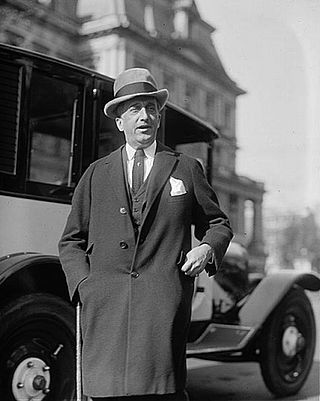
Jonathan Ogden Armour was an American meatpacking magnate and only surviving son of Civil War–era industrialist Philip Danforth Armour. He became owner and president of Armour & Company upon the death of his father in 1901. During his tenure as president, Armour and Co. expanded nationwide and overseas, growing from a mid-sized regional meatpacker to the largest food products company in the United States.

The San Diego Air & Space Museum (SDASM) is an aviation and space exploration museum in San Diego, California. It is located in Balboa Park and is housed in the former Ford Building, which is listed on the US National Register of Historic Places. The museum was established by articles of incorporation on October 12, 1961, and opened to the public on February 15, 1963.

Calbraith Perry Rodgers Jr. was an American aviation pioneer. He made the first transcontinental airplane flight across the U.S. from September 17, 1911, to November 5, 1911, with dozens of stops, both intentional and accidental. The feat made him a national celebrity, but he was killed in a crash a few months later at an exhibition in California.

The Wright Model A is an early aircraft produced by the Wright Brothers in the United States beginning in 1906. It was a development of their Flyer III airplane of 1905. The Wrights built about seven Model A's in their bicycle shop during the period 1906–1907, in which they did no flying. One of these was shipped to Le Havre in 1907 in order to demonstrate it to the French. The Model A had a 35-horsepower (26 kW) engine and seating for two with a new control arrangement. Otherwise, it was identical to the 1905 airplane. The Model A was the first aircraft that they offered for sale, and the first aircraft design to enter serial production anywhere in the world. Apart from the seven machines the Wrights built themselves in 1906–1907, they sold licences for production in Europe with the largest number of Model A's actually being produced in Germany by Flugmaschine Wright GmbH, which built about 60 examples.
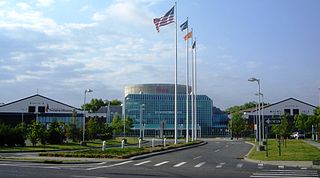
The Cradle of Aviation Museum is an aerospace museum located in Uniondale, New York on Long Island, established to commemorate Long Island's part in the history of aviation. It is located on land once part of Mitchel Air Force Base which, together with nearby Roosevelt Field and other airfields on the Hempstead Plains, was the site of many historic flights. So many seminal flights had occurred in the area that, by the mid-1920s, the cluster of airfields was already dubbed the "Cradle of Aviation", the origin of the museum's name.
A transcontinental flight is a non-stop passenger flight from one side of a continent to the other. The term usually refers to flights across the United States, between the East and West Coasts.

The Wright Flying School, also known as the Wright School of Aviation, was operated by the Wright Company from 1910 to 1916 and trained 119 individuals to fly Wright airplanes.

The Wright Model B is an early pusher biplane designed by the Wright brothers in the United States in 1910. It was the first of their designs to be built in quantity. Unlike the Model A, it featured a true elevator carried at the tail rather than at the front. It was the last Wright model to have an open-frame tail. The Model B was a dedicated two-seater with the pilot and a passenger sitting side by side on the leading edge of the lower wing.
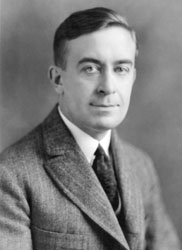
Alfred Victor Verville was an American aviation pioneer and aircraft designer who contributed to civilian and military aviation. During his forty-seven years in the aviation industry, he was responsible for the design and development of nearly twenty commercial and military airplanes. Verville is known for designing flying boats, military racing airplanes, and a series of commercial cabin airplanes. His planes were awarded with the Pulitzer Speed Classic Trophy in 1920 and 1924.

The Perry family is an American naval and political dynasty from Rhode Island whose members have included several United States naval commanders, naval aviators, politicians, artists, clergymen, lawyers, physicians, and socialites. Progeny of a mid-17th-century English immigrant to South Kingstown, Rhode Island, the Perry family patriarch, Captain Christopher Raymond Perry, and his two sons Commodore Oliver Hazard Perry and Commodore Matthew C. Perry, were seminal figures in the legitimization of the United States Navy and establishment of the United States Naval Academy.
